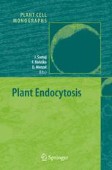Search
Search Results
-
Senescence and Cell Cycle Control
In response to various stresses, such as telomere shortening during continuous proliferation, oxidative stress, DNA damage and aberrant oncogene...
-
Systems Biology: necessary developments and trends
At the end of this definition of Systems Biology through exampling, we discuss ambitions, goals, and challenges relating to this new discipline. We...
-
Control of Cell Proliferation and Growth by Myc Proteins
Myc proteins act as signal transducers that alter cell proliferation in dependence on signals from the extracellular environment. In normal cells,...
-
Regulation of the heat shock response by heat shock transcription factors
The heat shock response is characterized by a rapid and robust increase in heat shock proteins upon exposure to protein-damaging stresses. This...
-
Template-induced protein misfolding underlying prion diseases
Proteins with prion properties are closely associated to a class of fatal neurodegenerative illnesses in mammals and to the emergence and propagation...
-
Methods and Molecular Tools for Studying Endocytosis in Plants---an Overview
Proteins of the endocytosis machinery in plants, such as clathrin and adaptor proteins, were isolated and characterized using combinations of...
-
Storage Proteins and Peroxidase Activity During Zygotic and Somatic Embryogenesis of Firs (Abies sp.)
Somatic embryogenesis was initiated from immature embryos of Abies concolor (Gord. et Glend), A. numidica De Lann. and A. cilicica Carr., A....
-
Genomic and Molecular Analyses of Transporters in the Male Gametophyte
The major events of male reproductive development and function have been known for years, but the molecular and cellular bases of these processes...
-
Tip Growth and Endocytosis in Fungi
Recent advances in molecular cell biology have provided new insights into different cellular processes that all turn out to contribute to...
-
The human Werner Syndrome as a model system for aging
The aging process is one of the most challenging biological pathways to understand. Applications of model systems for aging have contributed...
-
Transcriptome analysis in abiotic stress conditions in higher plants
Drought, high salinity, and low temperature are major environmental factors that limit plant productivity. Plants respond and adapt to these stresses...
-
Signal transduction in plant cold acclimation
Temperate plants respond to low temperature by activating a cold acclimation program leading to enhanced tolerance to freezing temperatures. This...
-
Sensors of abiotic stress in Synechocystis
Systematic mutagenesis of histidine kinases in combination with DNA microarray technology has allowed us to identify sensors for cold, hyperosmotic...
-
Plant responses to heat stress
The heat stress response is characterized by inhibition of normal transcription and translation, higher expression of heat shock proteins (hsps) and...
-
1 Phospholipid synthesis in mammalian cells
Phospholipids are the main components of biological membranes and as such act as the major permeability barrier between cells and the extracellular...
-
2 Phospholipid synthesis and dynamics in plant cells
Phospholipids represent the second family of lipids after the galactolipids in photosynthetic tissues and the first in non-photosynthetic tissues....
-
Abscisic acid signalling
Signalling of abscisic acid (ABA) in plants is characterized by an amazing number of secondary messengers that are part of the pathway or modulate...
-
Plant salt tolerance
Soil salinity adversely affects crop productivity and quality. The success of breeding programs aimed at salinity tolerant crop varieties is limited...
-
Aging and mitochondrial dysfunction in the filamentous fungus Podospora anserina
In the filamentous fungus Podospora anserina, mitochondria play a paramount role in life span control and aging. During aging, these organelles...
-
Aging and the programmed death phenomena
Biochemical mechanisms of the programmed death phenomena are considered at levels of unicellular organisms, mitochondria, cells, groups of cells, and...
